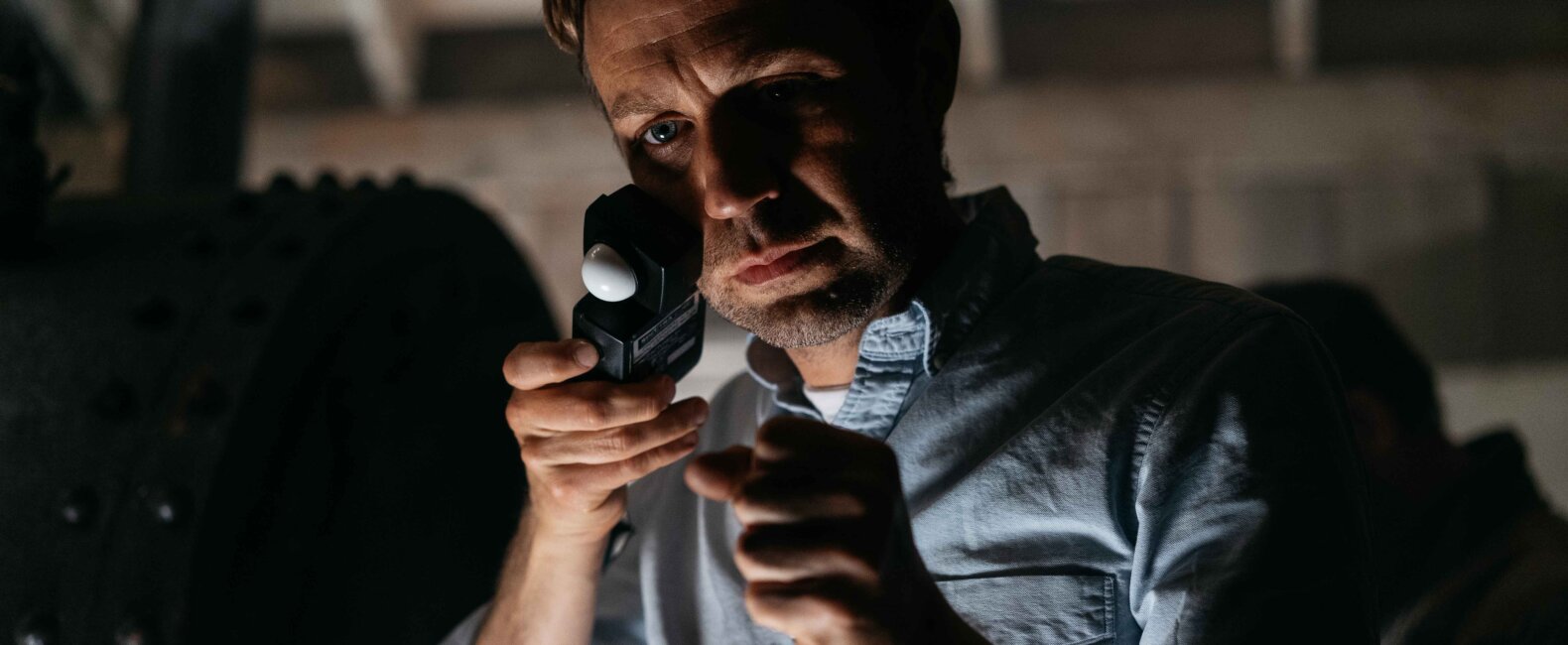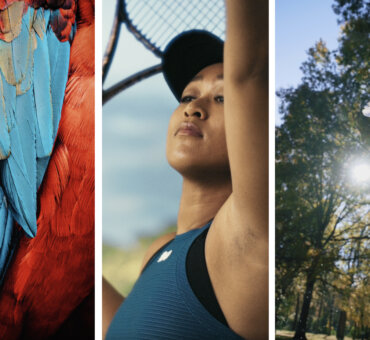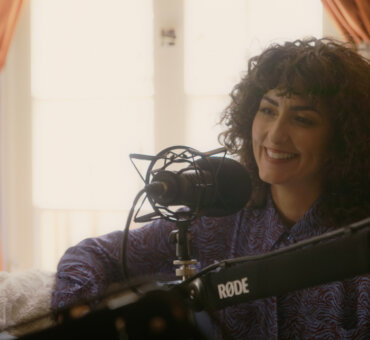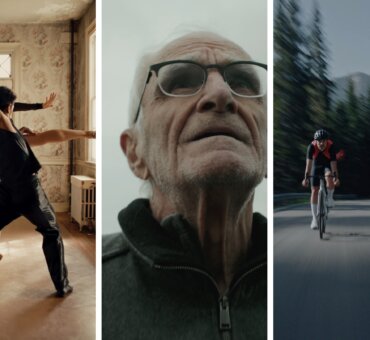Generally, the words “what did you shoot this on” are frowned upon around Musicbed. We’re generally a bit more interested in the ‘why’ rather than the ‘how’. But, when you look at the cinematography of The Lighthouse, it’s nearly impossible to separate the two. Its visuals are haunting, mystifying, and incredibly intentional according to cinematographer Jarin Blaschke.
He and Director Robert Eggers spent a matter of years planning this film, some of which occurred before production of The Witch. This lengthy pre-production gave them a unique advantage—to create a film that is nearly impossible to compare to anything else.
“When I watch the film, it feels like its own thing. It does vaguely take you to the past, but hopefully it’s not a mere recreation,” Jarin told us. “It’s a mix of things. It feels like the 19th century and it also feels like the 1930s. Ultimately, it has to feel like it came out of us.”
So, how do you achieve this “mix of things”? With a lot of hard work, risk, freezing rain, (very) old lenses, wizardry from Panavision, and the brightest lights that Eastern Canada has to offer.
It’s a bit more interesting when Jarin explains it, so we’ll let him take it from here.
Defining the Visual Language
Musicbed: When did conversations for The Lighthouse start between you and Robert?
Jarin Blaschke: Rob conceived The Lighthouse somewhere in the middle of trying to get The Witch made. That film was super contained, but Rob wanted to try something that was even more contained. Instead of a family, what if it’s just two people? You can’t get much more contained than a lighthouse.
How did you begin to hone in on a visual language?
Early on, the first thing that Rob would say comes to him is the mood and the atmosphere, then the story comes out of that. When he pitched the movie to me, well before it was written, he said it would be a claustrophobic movie set in a lighthouse. He said, “It’ll be black and white with a cherry on top.”
I didn’t quite understand that at first [laughs]. I eventually came to understand that it was classically black and white, not a color movie desaturated. It’s dark with high contrast, all of the lighting is optimized for black and white. It’s an unapologetically black-and-white movie.
Rob really likes to transport audiences. I’m still amazed I found someone who’s so visually distinct to work with. Early on we said we really wanted to evoke a time period. He sent me a list of movies to watch. He usually sends about five dozen of them and I can get around to watching 10 or 12 in priority order, but I do try! For me, a half dozen to a dozen is enough to synthesize something from within.

Which film stood out the most?
The movie that really impacted me was Fritz Lang’s M. We were exploring this idea of the 1.19:1 aspect ratio, so I watched it for that reason. It’s very modern; it really uses the camera and sound given the time period—what’s in the frame, what’s not in the frame. For me, exclusion and reduction is more important to think about than inclusion. Subtle signifiers. M is pretty sophisticated, but it still feels like the 1930s. It started transforming how I saw the film.
It’s just a matter of how to figure out how to use the camera in a way that is active but not completely contemporary. A lot of camera moves were eliminated or changed because they felt expected in a contemporary movie. We wanted to use the camera in a very thoughtful, careful way.
The look of the film does more than just look old, though.
Yeah, for sure. Ultimately that falls flat though—it’s a one-note trick. When I watch the film, it feels like its own thing. It does vaguely take you to the past, but hopefully it’s not a mere recreation. It’s a mix of things. It feels like the 19th century and it also feels like the 1930s. Ultimately, it has to feel like it came out of us. Hopefully, it feels layered and we’re not just checking old-timey boxes.
The benefit of having a few years to contemplate a project is that a film works its way into you. You finally sit down to write a shot list and it’s almost instinctive. Stuff either feels right or it doesn’t. Ultimately, it’s down to your instincts. If something ever felt a little too precious or gimmicky, or obvious or half-baked, those things got weeded out in the process of sitting with it for a while.

Why did you decide on the boxier aspect ratio?
We assumed for the first few years that it’d be 1.33:1, just your standard academy ratio.
But, we knew it was going to be black and white, with two people. It was confined and atmospheric and dark. It came up again, though, when we were at some Oscar party in 2017. A producer was there and he was getting excited about it. I said to Rob, off-hand, that if we wanted to really confine it we should shoot in 1.1:9. I wasn’t necessarily serious, but he really took to it.
I’ve shot lots of still photography in a square format. I found it to be the perfect environmental portrait format: a perfect ratio of subject and setting. We knew the sets would be confined. I knew, of course, the lighthouse is a vertical object. We could really scrunch them in the frame and could use the vertical component of a composition, which you rarely get to do. We could put people’s heads low in frame and put something above them and really feel the ceiling.
You’ve shot in 35 millimeter before?
Yeah. I shot nothing but film until about 2010. Then everything went digital. Once Alexa hit, everything went that way. I was pretty confident shooting film when I was 21 [laughs]. Then, 15 years later, you get used to having a monitor around to check everything. It took about two weeks to get used to it again. To using your calibrated eyes and just looking at the thing in front of you rather than a monitor.
Black and white film has much less latitude than the color film— Kodak Double-X came out in 1959. As far as I’m aware, Kodak hasn’t touched it since. It’s pretty old technology. Instead of having six stops of shadow latitude you have about four and a half.
Shooting on Location
Did that make it more difficult when you’re on location?
You have to start using a lot of light. Black and white film is much less sensitive. Shooting on color film you’re working at ISO 400. Alexa’s 800. We were shooting it at 80. You need ten times more light. It may be a dark movie, but I’ll tell you on set it was blinding at times. I felt bad for the actors because they were always seeing spots. Willem and Rob are looking at each other, but they can barely see each other sometimes. From what I was told, we took almost all the big HMIs in eastern Canada to fill out the bounce light for day interiors on the set.

The production team built a lighthouse from scratch, correct?
A movie lighthouse, at least. It’s made out of scaffolding with a skin put on it. They cast bricks into that skin. We didn’t think there would ever be a functioning lens, but [Production Designer] Craig Lathrop surprised us at the very end and got the real Fresnel lens up in the lighthouse on location. I don’t know how tall the actual structure was, maybe 70 feet. It had to withstand Cape Forchu, which is impressive in itself.
Were the conditions difficult?
I’m used to every shoot with Rob being physically miserable [laughs]. I’m generally fairly hardy, but I get sick every time I do something with him. This was no exception. It was almost constant freezing rain. I have memories of eating breakfast in a tent, with the sound of the howling wind and endless, deafening banging and clanging and rattling. Eating some sort of cold porridge. It was really fitting for the film [laughs].
Plus, our lenses are 80 years old. If you get saltwater in there, they’re done. They’re also not replaceable. We had some pretty delicate stuff that was very exposed. One lens actually broke down. We had to send it in. We didn’t have a 25-millimeter lens for about three weeks.
Selecting the Lenses
What kind of lenses did you use?
They’re Bausch & Lomb Baltar lenses. I tested a good number of lenses for The Witch and I got to know vintage lenses pretty well. For this, I wanted an even stronger look. I knew we needed a contrasty look and I knew we needed an orthochromatic look. So, I went to Panavision and asked for some “off-menu” options. There was a lens from 1905 and a couple other things. You hear about the Super Baltars but I didn’t know about the original Baltars, which were designed in the ’30s, which isn’t that far from the era of lenses used on something like M.
They’re the most beautiful portrait lenses I’d ever seen. Highlights with glow. Distinct, but they weren’t too heavy-handed. It wasn’t gauzy. They had a shimmery quality that really took me somewhere else. I fell in love with them.

Did you have to retrofit the cameras to fit them?
They were made before rotating reflex cameras. They’re made for old rackover cameras—rangefinder cameras, essentially. Panavision had to optically adjust these lenses to work with a modern film camera, which I didn’t think was possible, but Dan Sasaki did it. As far as I’m aware, they have not been used with a film camera since the reflex camera was invented.
Honing In On The Look
You mentioned an “orthochromatic” look. Could you explain that?
Black and white can mean a lot of things because you get to choose what spectrum you extract your black and white image from. The first photographic materials were sensitive to ultraviolet light and blue light. That was it. If you look at the earliest photography, it looks different than black and white film now. Things that emitted a lot of ultraviolet and blue light were very bright. That’s why a Carleton Watkins or Timothy O’Sullivan photograph has hazy, blank white skies. Skin tones are always very dark in those old photographs and super textured because they primarily reflect red with a little bit of green. The emulsion could barely see them.
Around 1870, they expanded the spectrum of film to include green light. They called those emulsions orthochromatic, meaning all wavelengths, even though it’s inaccurate. It’s really just blue and green. That was the predominant type of film until about late ’20s or 1930.
If you look at silent films the sky is generally blindingly white. In Hollywood films, they would put on a lot of makeup, that classic silent film look with makeup pancaked on. That’s because the film wasn’t sensitive to red light and everyone looked very weathered and craggy otherwise. I liked that look for this film. I wanted to emphasize texture. Make them look as rough as possible. I have to say Willem has some very good skin, but it even works on him [laughs].

So, how did you get that look?
I wanted to eliminate red light coming into the camera. So, what do you do? You could get blue filters or blue-green filters, but there’s a lot of peripheral light they also eliminate and the film was not that sensitive. Filters would cut three or four stops. You’re down to ISO 25 or even 12 with filters on, which is not practical at all. Finally, Mike Carter at Panavision introduced me to Ron Engvaldsen at Schneider and, shockingly, they offered to make a custom filter for us.
They asked me to draw a spectrograph indicating what wavelengths I wanted and didn’t want. I drew a picture, emailed it to them, and they made it within a month’s time. Even better, Panavision paid for it. I don’t know who they’re going to rent these filters to, but it blows my mind that this happened.
Why go through all of this trouble?
We could have shot color or de-saturated it. We could have pulled out the red channel. But, it doesn’t quite look the same. There’s so much more satisfaction doing it the difficult way sometimes. It gives that extra 20 percent and hopefully people will feel it. Sometimes it’s more satisfying with a little struggle.
Watch The Lighthouse from the comfort of your own couch, now available for streaming.




















































































